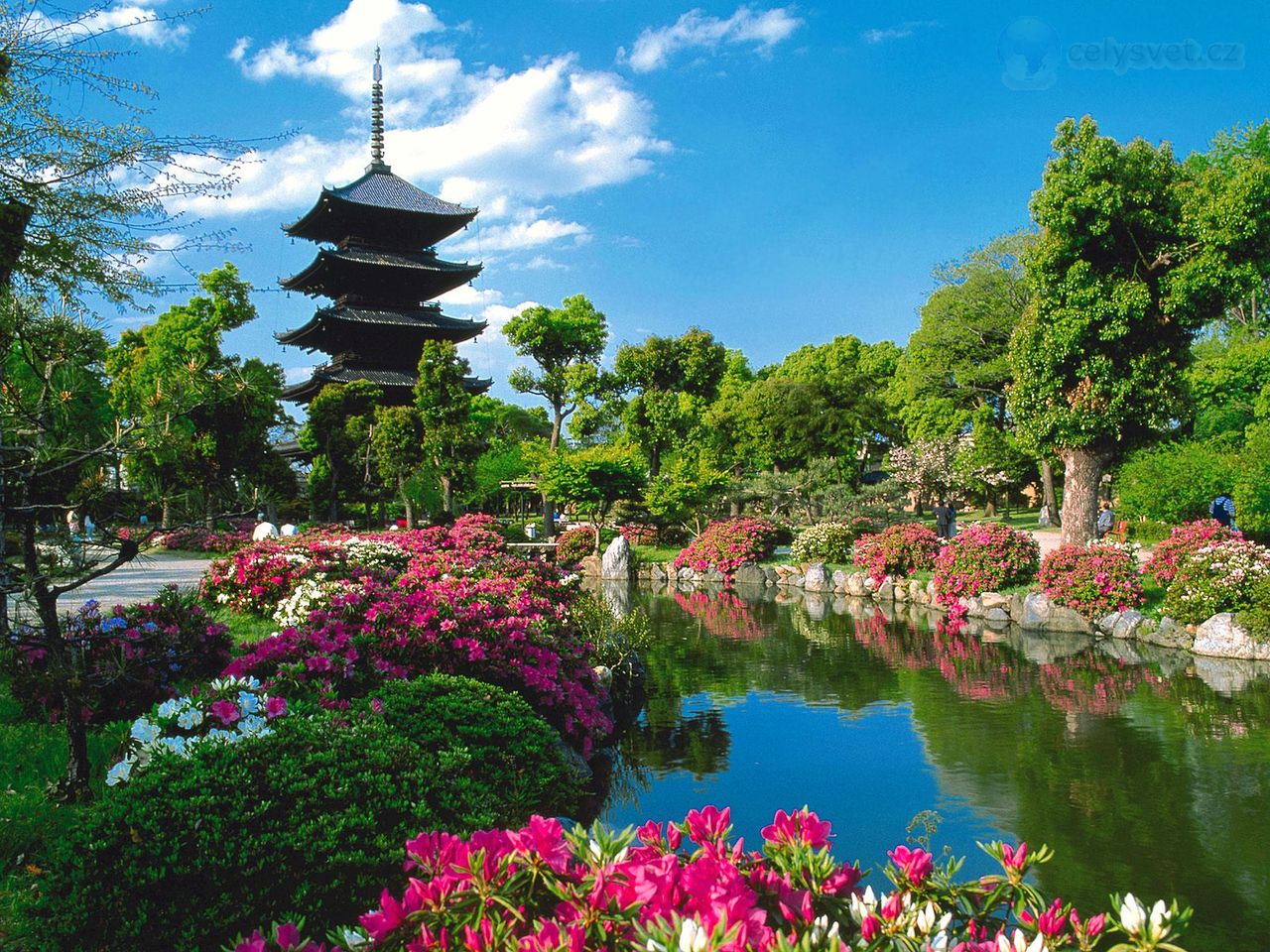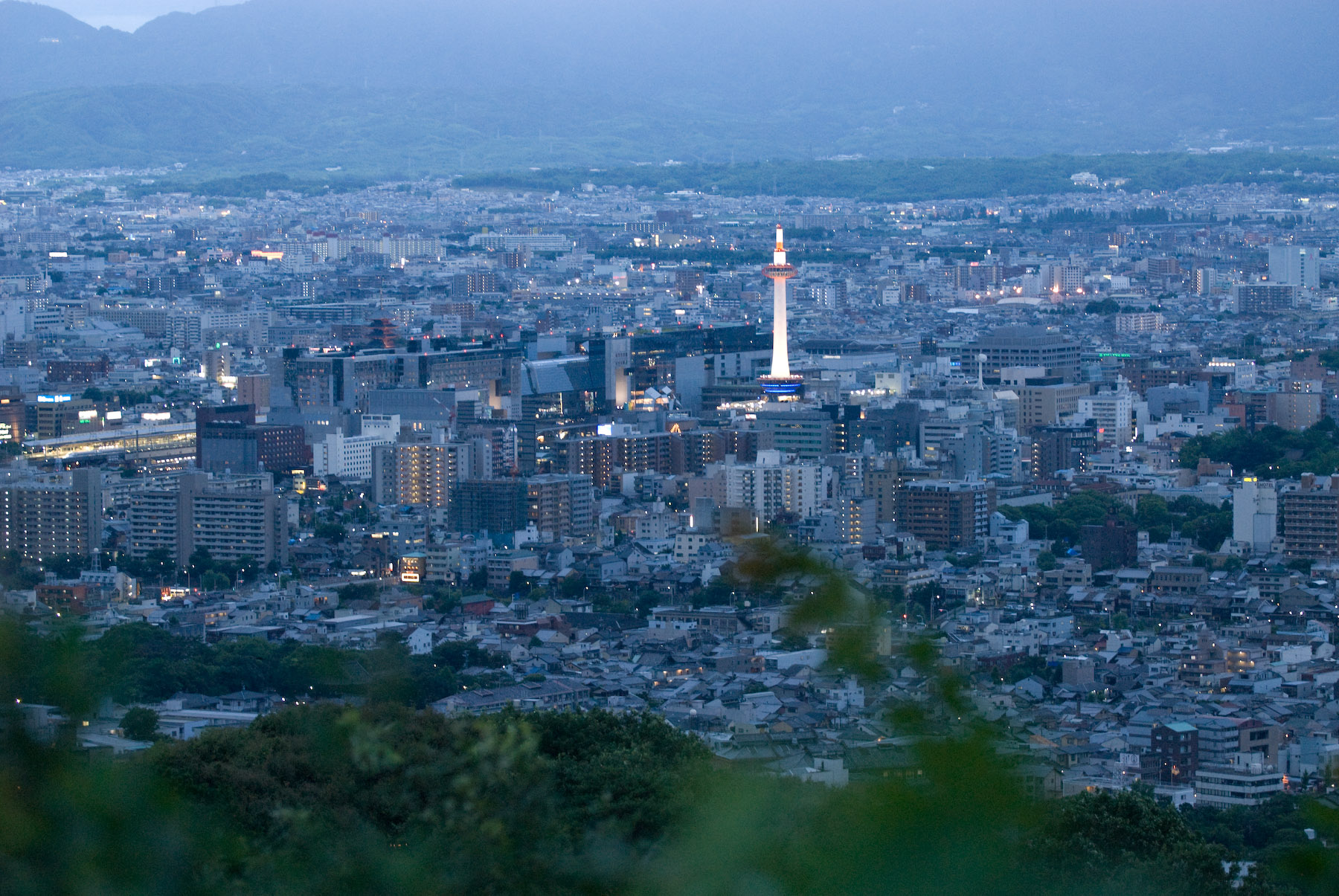
Kyoto, Japan's most historically important town, is the country's sightseeing capital, packed with 1,600 Buddhist temples, 300 Shinto shrines, imperial palaces, gardens, and traditional wooden homes, all well preserved and presenting a charming picture of traditional Japanese culture. The city lies in the mid-western Kansai district on the island of Honshu, surrounded by plains full of rice paddies.

Visitors arriving from the Kansai International Airport or on board the famous Shinkansen bullet train at Kyoto's modern central station may be disenchanted to initially discover a thriving, overcrowded industrial city with a straight grid of uniform streets presided over by the futuristic Kyoto Tower.

The city may present a modern face, but explore behind the scenes in the outer districts or off the beaten track in the old merchants' quarters and you will glimpse cameos and images of traditional Japan, from cherry blossom to geishas, and bonsai trees to shoji screens.

Apart from the architectural legacy, which was fortunately spared the heavy bombings inflicted on other Japanese cities during World War II, Kyoto also boasts some of Japan's most significant art works, a culturally traditional way of life, and superior cuisine. No visit to Japan is complete without devoting some time to exploring Kyoto.
Kyoto Attractions
Kyoto Imperial Palace
Japan's imperial family lived in the Kyoto palace from 1331 until 1868 (when they moved to Tokyo), and today visitors can view the furnishings and delicate decorations on guided one-hour tours of the city's Imperial Palace. It is necessary to reserve a tour... see full details
To-ji
To-ji, with the tallest pagoda in Japan, was the Buddhist temple founded in 794 as guardian of the then young capital city's welfare. Today it stands about 10 minutes walk to the south of Kyoto Station, drawing curious tourists to admire in particular... see full details
Sanjusangen-do
The temple of Rengeoin, in eastern Kyoto, is better known by its popular name of Sanjusangen-do, and houses an amazing sight. Inside the longest wooden building in Japan stand row upon row of life-sized statues of Kannon, the goddess of mercy, carved from Japanese... see full details
Gion
Most visitors to Japan are fascinated with the traditional Geisha: white-faced kimono-clad women specially trained to entertain and spoil men in a soothing setting. Kyoto boasts one of the most famous Geisha districts in the country, a neighbourhood of plain wooden buildings to the... see full details
Kiyomizu-dera
The 'Pure water temple', Kiyomizu-dera, is one of Japan's most celebrated temples, founded in 780 and associated with Nara Buddhism, the oldest sect in Japan. The temple is a UNESCO World Heritage Site and one of its main features for tourists is the lovely... see full details
Minamiza Kabuki Theatre
Kabuki is a traditional Japanese dance-drama known for its stylised take of performance and the elaborate make-up worn by some performers. It is a very old art form, which had its golden age in the late 17th and early 18th centuries. Today it... see full details |
No comments:
Post a Comment